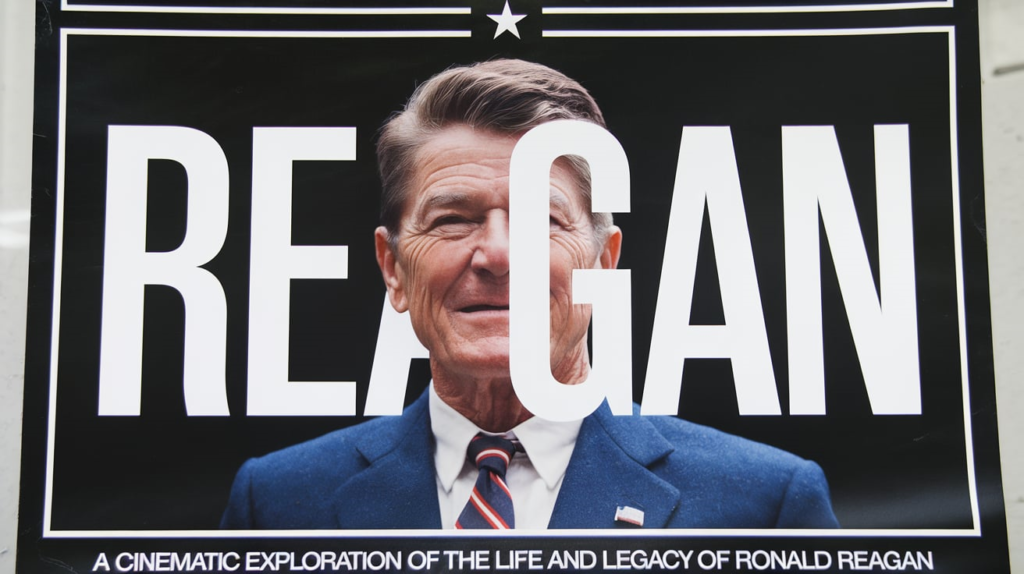Ronald Reagan: The Man Who Formed Modern America 1
Introduction: Ronald Reagan- A Glimpse into his Legacy
Ronald Reagan was the towering figure in American life who, from 1981 to 1989, was the 40th President. His presidency marked one of many turning points in U.S. politics, economics, and foreign policy. The influence of Reagan went on beyond his years in office into his ideas and policies, which kept shaping the Republican Party and American political discourse for decades.
We reflect upon a multitude of thoughts in regard to this article covering Ronald Reagan’s life and his legacy: his early years, how he came into prominence within the political spectrum, key moments of his presidency, how his policies took shape-not just of the United States but of the world-and what view is taken today of his tenancy. In this process, there will be many points of personal experiences and understandings pertaining to the impact of Reagan himself. As such, this is not necessarily an historical analysis but rather a personal class throughout the life and times of one of America’s most iconic leaders.

Table of Contents
Early Life: From Humble Beginnings to Hollywood Stardom
Ronald Wilson Reagan was born on February 6, 1911, in Tampico, Illinois, to Jack Reagan, a salesman, and his homemaker mother, Nelle. The poor but high-on-love-and-faith Reagan family struggled to get through. He always spoke about how his mother’s religiosity and optimism concerning his father’s general outlook on life had set into his worldview.
Of course, the Great Depression was a critically pivotal time for Reagan as a child: he watched the many trying instances that were so prominent amongst a large number of Americans then. These experiences, in a nutshell, would later form his political philosophy-particularly in his belief in self-reliance and power in the individual.
After attending Eureka College, Reagan went directly into radio broadcasting upon graduation in 1932. His warm voice and natural charm made him an immediate hit on the air. Hollywood was what launched him into the nation’s view: in 1937, Reagan signed with Warner Bros. and began an acting career which ultimately placed him in more than 50 films.

From Actor to Governor: The Emergence into Politics
In addition to providing a source of acting employment, Hollywood also became a source of Reagan’s political identity. Through his presidency of the Screen Actors Guild, he became intimately acquainted with such hot topics of American politics in the post-World War II period as labor disputes and anti-communism. Finally, along with the growing unease over the country’s direction, this led Reagan to change his party affiliation from Democratic to Republican via this work with the Guild in the early 1960s.
In 1964, Reagan delivered a televised speech on behalf of the Republican presidential candidate Barry Goldwater. The speech-“A Time for Choosing”-proved to be a moral watershed in Reagan’s life. This was an impassioned defense of conservative principles-to this day probably the best single speech ever made in the defense of conservatism-and it called the American people to action. So popular, this speech actually marked the beginning of Reagan’s political career, further on ending in his election as Governor of California in 1966.
As governor, Reagan began to realize policy programs exemplifying his conservatisms. He spoke about the reduction of government spending, welfare program reforms, and rise in state crimes. Popularity of Reagan as a governor made him one of the prominent figures of the Republican Party, which in fact opened his path to presidential campaigns in 1980.

Reagan Revolution: Most Significant Presidency Moments
In 1980, Ronald Reagan carried the presidency in a landslide election over incumbent President Jimmy Carter. Immediately, his election launched what many described as the “Reagan Revolution,” an era marked by a shift toward policies that became defined as conservative, a renewed sense of pride in America, and unyielding opposition to the Soviet Union.

Economic Policy: Reaganomics
Most striking in Reagan’s presidency was his economic policy better known as “Reaganomics.” The policy has a basis on supply-side economics where the chief cornerstone has been tax cuts, deregulation, and a reduction in government spending in an attempt to spur economic growth.
He felt that those taxes, lowered once more-especially on businesses and the wealthy-would “trickle down” and help the rest of the economy. Reagan signed into law significant tax cuts, most notably signing the Economic Recovery Tax Act of 1981, which cut the top marginal tax rate from 70 percent to 50 percent.
Although Reaganomics brought a recession in the early years of the decade, it later started steamrolling and provided the country with one of the longest peacetime expansions that America had ever seen. Yet, critics argue that Reagan’s policies gave too much leeway to the wealthiest of Americans thus building income inequality throughout the United States.
Foreign Policy: The Cold Warrior
Foreign policy, which Reagan developed around his stark and ardent opposition to communism, basically known under the name of the Soviet Union, labeling it even as “the Evil Empire”; what he wanted was containing its influence around the world. The different path which Reagan took away from the cautiousness of his forerunners was that America now was believing in taking an extremely aggressive stance to win the Cold War.
The SDI-better known as “Star Wars”-was one of the signature elements of Reagan’s foreign policy. In 1983 he called for a missile shield that would bar nuclear missiles from reaching the United States. Though the technology was never developed, the initiative was representative of the resolve of Reagan to keep America militarily supreme.
His candor with the then-Soviet leader Mikhail Gorbachev during the latter half of his presidency helped to diffuse superpower tensions. Part of this involved the signing, in 1987, of the INF (Intermediate-Range Nuclear Forces) Treaty with Gorbachev-a milestone which helped bring the Cold War to an end.

Social and Domestic Issues: Balancing Conservatism and Compassion
Domestically, he had to address the rise of the AIDS epidemic, the war on drugs, and social issues such as debates relating to abortion vis-à-vis civil rights. Indeed, many such issues would be framed by his conservative outlook.
Another was that he did nothing to help with silence regarding the crisis of AIDS, then emergent in the early 1980s. He didn’t give a speech on this epidemic publicly until 1987-years later-with tens of thousands of Americans having died from the disease by then. His administration later actually proposed funding for AIDS research and education.
His stance regarding drug abuse was hardline, which indeed encouraged Reagan to continue the “War on Drugs” and put rigid laws against drug trafficking into practice. Such campaigns were popular enough among Americans, yet at the same time, they brought about mass incarceration of drug offenders that tended to be non-violent, thus criminalizing minority communities.
In addition, he was socially dear to conservative voters for his opposition to abortion and for standing for traditional family values. However, his administration received criticisms regarding civil rights, especially in terms of the affirmative action policies.
Personal Reflections: Reagan’s Impact on My Life
Well, having grown up in the eighties, Ronald Reagan was much more than a president; he came to personify hardy American spirit coupled with optimism. Televized speeches, which I still vaguely remember, since no other man seemed to speak so clearly and with conviction as he did. His message-that which managed to echo to me and to millions-more or less ran like this: hope and belief in the American dream.
Indelibly printed in my mind would have to be the fall of the Berlin Wall back in 1989. Though he was no longer in office, Reagan immediately came to mind with his now-famous challenge to Gorbachev to “tear down this wall.” Images of East and West Berliners coming together were huge. It was a moment in which the consequences of his leadership in the world came full circle upon his words as an inspiration for change.
It wasn’t just politics; the impact of Reagan tore deep into the very heart of America’s cultural ethos. The storytelling-something groomed over years in Hollywood-was something to which ordinary Americans could relate. From a speech given during a crisis to simply telling a joke at a press conference, Reagan reached the American mind and heart in ways few politicians were able.

Long-term Impact of Reagan
By the time Ronald Reagan retired from the presidency in 1989, he was doing so relatively popularly. Since that moment, his legacy has only grown further, with some largely regarding him as the one who rejuvenated the Republican Party by laying the ground for what would become the conservative movement.
The presidency of Reagan indeed left an indelible mark on U.S. foreign policy. The aggressive overtures he made against the Soviet Union, together with strengthening America’s military, helped bring the Cold War to its eventual close. Although most of his policies remain very controversial to this date, it is no gainsaying the high impact which Reagan had upon the trend of American history.
Now, years out of the presidency, Reagan has become something of an icon, especially to conservatives, who seem to regard him as the gold standard against which all Republican leaders should be measured. Politicians and pundits invoke his name as if by a bid to equate their vision with his of a strong, prosperous America.
There is, however, something not quite right with Reagan’s legacy. While hailed as a heroic figure, contributing to the close of the Cold War and instilling pride once more in America, his presidency would also leave behind a checkered legacy with regard to economic inequality, civil rights, and public health. It is little doubt that, with the passage of time and continuing historical scholarship on his life and presidency, debate about Reagan’s legacy will continue.
Conclusion: The Never-Dying Legacy of Ronald Reagan
Ronald Reagan was the leader of an age. His is a presidency underlined by devotion to conservative principles, the belief in American exceptionalism, and steely determination for the United States to come out on top in the Cold War. Beyond the politics and the policies, however, was a Reagan who intrinsically believed in the power of the American people-overcoming challenges, achieving greatness.
Now, when one thinks of the life and times of Reagan, it is pretty clear how his impact would not be restricted only to those surreal eight years he spent in the White House. One way or another, Ronald Reagan-with certain economic policies, foreign policy initiatives, or simply having the ability to make a message of hope and optimism ring with real meaning-voiced his indelible mark upon the United States and the world.

He will always remain within the lines of vision to those of us who survived the Reagan era as a symbol of a moment in America rejuvenated for its rightful role as the beaming light upon the hill, to inspire and to lead a president who was quite sure that things could be better than they were. And to generations beyond, Ronald Reagan will part with not mere history, but go down into the tapestry of American memory-a president who personified and inspired his nation to relearn the magic of believing in itself.


Very impressive speech
thank you for appreciating me
very informative content for us thanks for sharing this kind of content
Zen Mart